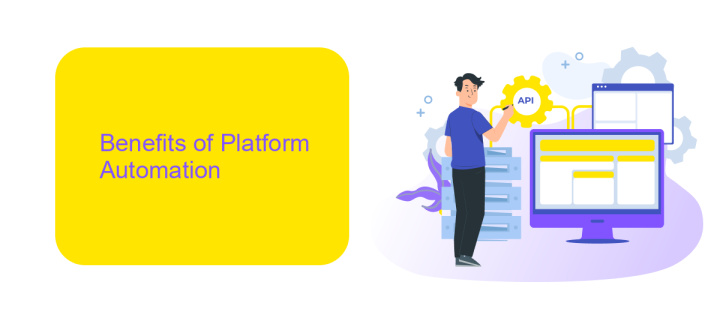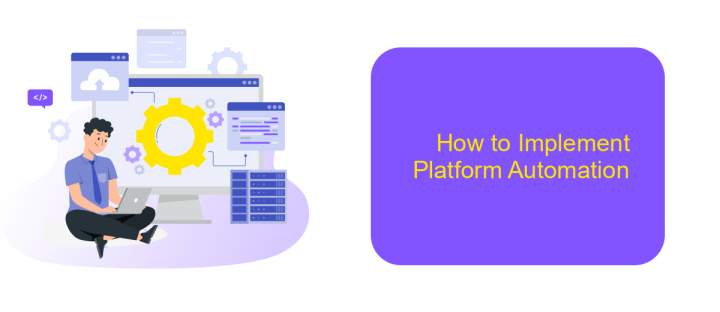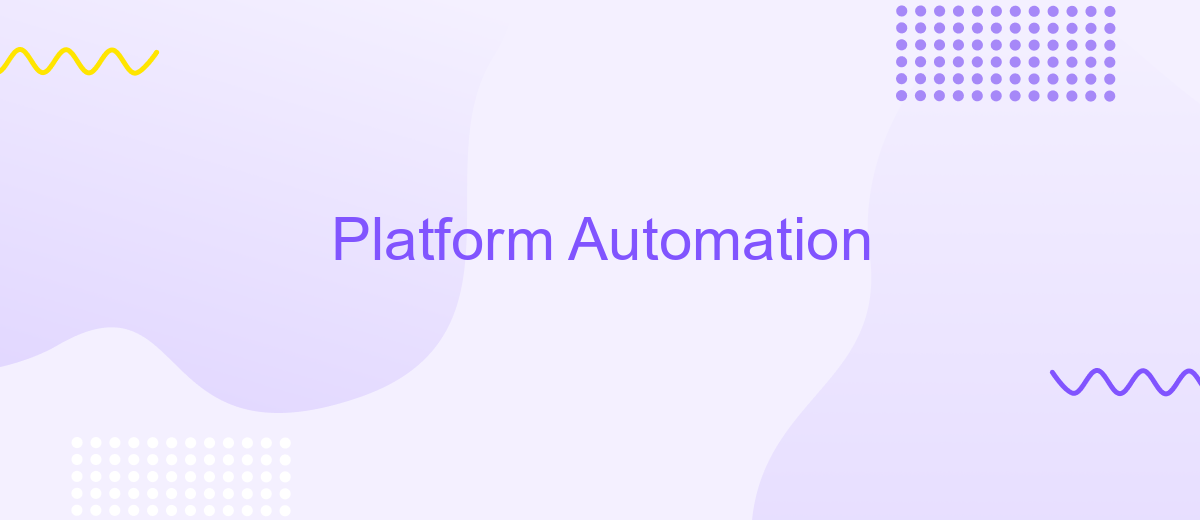Platform Automation
In today's fast-paced digital landscape, platform automation has become a cornerstone for businesses seeking efficiency and scalability. By leveraging advanced technologies, companies can streamline operations, reduce human error, and accelerate time-to-market. This article delves into the key benefits, tools, and strategies for implementing effective platform automation, empowering organizations to stay competitive and drive innovation in an ever-evolving market.
What is Platform Automation?
Platform automation refers to the use of technology to perform tasks and processes within a computing platform without human intervention. It aims to streamline operations, reduce errors, and improve efficiency by automating repetitive and time-consuming tasks. This allows IT teams to focus on more strategic initiatives and innovation.
- Reduces manual intervention
- Enhances operational efficiency
- Minimizes human errors
- Improves scalability and reliability
- Frees up resources for strategic tasks
By implementing platform automation, organizations can achieve a more agile and responsive IT environment. Automation tools can handle tasks such as software deployment, system monitoring, and data management, ensuring that the platform operates smoothly and efficiently. This not only boosts productivity but also supports business growth and innovation.
Benefits of Platform Automation

Platform automation significantly enhances operational efficiency by streamlining repetitive tasks and reducing the likelihood of human error. By automating routine processes, businesses can allocate their human resources to more strategic activities, fostering innovation and improving overall productivity. This shift not only saves time but also ensures consistency and reliability in operations, which is crucial for maintaining high standards and meeting customer expectations.
Moreover, platform automation facilitates seamless integration between various services and applications. Tools like ApiX-Drive enable businesses to effortlessly connect different systems, ensuring that data flows smoothly across platforms. This connectivity is vital for real-time decision-making and maintaining an up-to-date overview of business operations. By leveraging such automation tools, companies can achieve greater agility, quickly adapting to changing market conditions and staying ahead of the competition.
Challenges of Platform Automation

Platform automation offers numerous benefits, including increased efficiency and reduced human error. However, it also presents a set of challenges that organizations must navigate to fully leverage its potential. Understanding these challenges is crucial for a successful implementation.
- Complexity: Automating a platform often involves integrating multiple systems and technologies, which can be complex and time-consuming.
- Security Risks: Automation scripts and tools can introduce new vulnerabilities if not properly managed and secured.
- Scalability: Ensuring that automated solutions can scale with the growth of the organization is a significant challenge.
- Cost: The initial investment in automation technology and training can be high, and ROI may not be immediate.
- Resistance to Change: Employees may be resistant to adopting new automated processes, requiring effective change management strategies.
Addressing these challenges requires a strategic approach, including thorough planning, continuous monitoring, and regular updates to the automation processes. By doing so, organizations can maximize the benefits of platform automation while minimizing its risks.
How to Implement Platform Automation

Implementing platform automation requires a strategic approach that integrates various tools and processes. The first step is to assess your current infrastructure and identify areas that can benefit from automation. This assessment will help you understand the specific needs and challenges of your platform, setting a clear foundation for your automation efforts.
Next, select the right automation tools that align with your platform's requirements. These tools should be capable of integrating seamlessly with your existing systems and provide scalability for future growth. It's crucial to involve stakeholders from different departments to ensure the chosen tools meet the diverse needs of your organization.
- Conduct a thorough assessment of your current infrastructure.
- Select appropriate automation tools that fit your platform's needs.
- Involve stakeholders from various departments.
- Develop a detailed implementation plan.
- Monitor and optimize the automation processes regularly.
Finally, develop a detailed implementation plan that outlines each step of the automation process. This plan should include timelines, resource allocation, and key performance indicators to measure success. Regular monitoring and optimization are essential to ensure the automation processes remain efficient and effective over time.
Case Studies of Platform Automation
In a recent case study, a leading e-commerce company leveraged platform automation to streamline its order processing system. By integrating various third-party services using ApiX-Drive, the company managed to automate data transfer between their e-commerce platform, CRM, and shipping services. This integration eliminated manual data entry, significantly reducing errors and processing time, ultimately enhancing customer satisfaction and operational efficiency.
Another example involves a financial services firm that automated its customer onboarding process. The firm utilized platform automation to connect its online forms, identity verification services, and internal databases. By employing ApiX-Drive, the firm seamlessly integrated these disparate systems, enabling real-time data validation and faster onboarding. This not only improved the customer experience but also ensured compliance with regulatory requirements, showcasing the transformative potential of platform automation in highly regulated industries.
FAQ
What is platform automation?
How can platform automation benefit my business?
What types of tasks can be automated on a platform?
Is it difficult to set up platform automation?
What tools can I use for platform automation and integration?
Time is the most valuable resource in today's business realities. By eliminating the routine from work processes, you will get more opportunities to implement the most daring plans and ideas. Choose – you can continue to waste time, money and nerves on inefficient solutions, or you can use ApiX-Drive, automating work processes and achieving results with minimal investment of money, effort and human resources.

